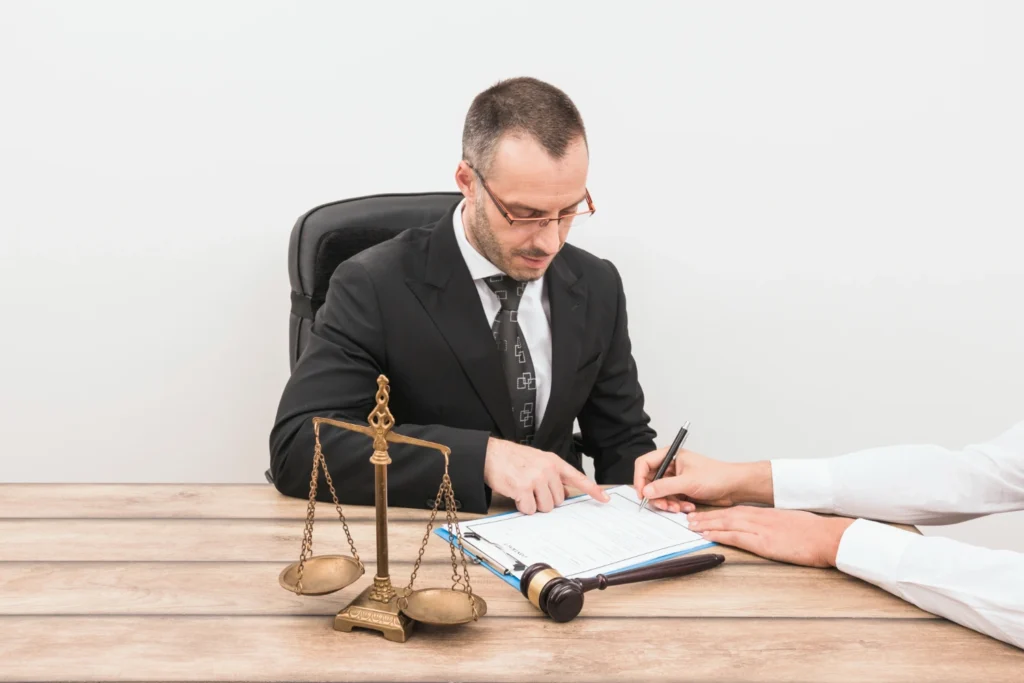Ever wondered who is responsible for maintaining a right of way Ireland? Whether it’s a rural path, a private lane, or a public road, right-of-way issues can get tricky especially when disputes arise over maintenance, access, or even blocked routes. I’ve seen firsthand how a simple pathway can turn into a legal battleground, leaving property owners frustrated and confused. In this guide, I’ll break down the laws, responsibilities, and real-life solutions to help you navigate these challenges with confidence. Let’s clear up the confusion and make sure you know your rights!
Understanding a Right of Way in Ireland
A right of way is more than just a shortcut across a field or a quiet country lane it’s a legal right to pass through someone else’s land. In Ireland, these rights have deep historical roots, often passed down through generations. But what exactly does it mean, and how does it differ from a simple right of access?
What Is a Right of Way?
A right of way is a legal right to travel over someone else’s land for a specific purpose whether that’s walking, driving, or even herding livestock. It can be public (open to everyone) or private (granted to specific individuals or properties).
Think of it like having a guaranteed route home, even if the path crosses a neighbor’s land. If you own landlocked property, a right of way might be your only way in or out!
Right of Way vs. Right of Access: What’s the Difference?
It’s easy to mix these up, but they’re not quite the same.
- A right of way gives you ongoing permission to travel through a specific path.
- A right of access is more limited it might only allow occasional entry for things like deliveries or repairs.
So, if you’re regularly using a lane to reach your home, that’s a right of way. If you just need permission to check on something once in a while, that’s a right of access.
Types of Rights of Way in Ireland
Not all rights of way are created equal. In Ireland, there are two main types:
- Public Right of Way – Anyone can use it. Think of old footpaths, boreens (narrow country roads), or scenic coastal trails. These are usually protected by local authorities.
- Private Right of Way – This benefits specific people or properties. It’s often written into property deeds, ensuring continued access over privately owned land.
And here’s where things can get complicated because with rights come responsibilities.

Who is responsible for maintaining a right of way ireland?
Ah, the age-old question who’s supposed to fix the potholes, trim the overgrown hedges, or clear the muddy mess when a right of way becomes unusable? If you’ve ever had a disagreement with a neighbor over this, you’re not alone. Right-of-way maintenance can be a gray area, especially when legal responsibilities aren’t clearly understood. So, let’s break it down.
Private Right of Way: Who’s Responsible?
When it comes to private rights of way, responsibility is usually shared between two parties:
- The Dominant Owner (the person who benefits from the right of way)
- The Servient Owner (the landowner whose property the right of way crosses)
Now, here’s where things can get tricky. Generally, the dominant owner has the right to use the path, but they’re also expected to contribute to its upkeep especially if they’re the primary user. That means if your driveway runs through a neighbor’s field, you can’t just expect them to maintain it for you. Fair’s fair, right?
But what if multiple people use the right of way? That’s where things get even more complex. Unless there’s a formal agreement in place (like a deed or contract), disputes can arise over who pays for repairs. Some landowners might be happy to share costs, while others might argue, “You use it more, so you should fix it.” Sound familiar?
Public Right of Way: What About Roads and Footpaths?
If the right of way is public like an old walking trail or a countryside boreen maintenance usually falls to the local authority. County councils are responsible for ensuring these routes remain accessible, though budget constraints can mean some paths get neglected. Ever walked down a supposedly “public” trail only to find it blocked by brambles or an old rusty gate? That’s usually a sign of poor maintenance or a landowner disputing public access.
If you come across a blocked or damaged public right of way, you can report it to your local council. They might step in and fix it or at the very least, clarify who’s responsible.
Legal Obligations: What Do the Laws Say?
Ireland’s Conveyancing Law Reform Act and Law Reform Act 2009 set out some key rules when it comes to maintaining a right of way:
- If the right of way is officially registered, there may be written terms specifying who maintains it.
- The dominant owner is generally expected to contribute to upkeep, especially if they rely on the path for daily access.
- If a dispute arises, legal mediation or court intervention may be necessary to clarify responsibilities.
So, if you’re ever stuck in a disagreement over who should maintain a right of way, checking the property deeds or legal agreements should be your first step. If nothing’s written down, it might come down to a matter of fairness and we all know how subjective that can be!

Common Right of Way Disputes and Legal Solutions
Let’s be honest right-of-way disputes can turn friendly neighbors into bitter enemies. I’ve seen it happen. One day, you’re exchanging pleasantries over the fence, and the next, you’re locked in a heated argument over who can (or can’t) walk down a shared lane. So, what are the most common issues, and what can you do about them? Let’s break it down.
Blocking a Right of Way: What If a Landowner Blocks Access?
Imagine waking up one morning to find a fence, a pile of stones, or even a parked tractor blocking your usual route. Frustrating, right? But is it legal?
In Ireland, if you have a registered right of way, the landowner cannot simply block it off. Doing so could be considered an unlawful obstruction. The first step? Have a calm, direct conversation. Sometimes, the blockage is unintentional a farmer might have left machinery in the way, or a storm could have knocked a tree over the path.
If talking doesn’t work, check your property deeds or Land Registry records to confirm your legal right. If it’s a public right of way, contact your local authority they have the power to intervene. If it’s private and the landowner refuses to remove the obstruction, legal action might be your only option.
Locking a Gate on a Right of Way: Is It Legal?
Ah, the classic “mystery lock” scenario. You go to use the right of way, and suddenly, there’s a padlock on the gate. Can they do that?
The answer depends on the agreement in place. If the right of way includes unrestricted access, locking a gate without providing a key or alternative entry could be unlawful. However, if the landowner has a legitimate reason like keeping livestock from wandering it might be considered reasonable, provided they give access to those with a legal right to use it.
If this happens to you, try resolving it amicably. If that fails, legal letters (or even court orders) may be needed to restore your access.
What If Someone Blocks Your Right of Way? Steps to Take
So, you’re facing an obstruction now what? Here’s your action plan:
- Document Everything – Take photos, note dates, and gather any evidence of previous use.
- Communicate First – A polite conversation can resolve many disputes without legal drama.
- Check Your Rights – Review deeds, Land Registry records, or any formal agreements.
- Seek Mediation – Sometimes, an impartial mediator can find a fair compromise.
- Legal Action as a Last Resort – If all else fails, a solicitor can guide you on the next steps, which may include court proceedings.
Can a Right of Way Be Removed in Ireland? Legal Process and Considerations
Yes, but it’s not as simple as just “taking it away.” A right of way can only be removed under specific legal conditions:
- If it was granted for a limited time and that time has expired.
- If it has been legally extinguished by agreement.
- If it has not been used for over 20 years and can be deemed abandoned under the Land and Conveyancing Law Reform Act.
If someone is trying to remove a right of way you rely on, seek legal advice immediately. The process involves formal legal proceedings, and once it’s gone, it’s tough to get back.

How Much Is a Right of Way Worth?
Ever wondered if a right of way has a price tag? You’re not alone. Whether you’re buying property, negotiating with a neighbor, or just curious about land values, the worth of a right of way can be a tricky subject. It’s not like checking the price of a pint in the local pub there’s no fixed menu for this! Don’t worry, though; I’ll explain it simply.
Factors That Influence the Value of a Right of Way
A right of way isn’t just a strip of land it’s an asset (or a liability) depending on how it’s used. Here are the main factors that determine its value:
- Location, Location, Location
Just like property values, the worth of a right of way depends heavily on where it’s situated. A private lane in a quiet rural area might be worth less than one in a bustling town where access is in high demand. - Type of Right of Way
Is it for walking only, or can vehicles pass through? A footpath might not add much value, but a driveway that provides essential access to a landlocked property? That’s a game changer. - Who Benefits from It?
A right of way that serves multiple households or businesses can be more valuable than one benefiting just a single property owner. More demand usually means a higher price. - Legal Status and Registration
If the right of way is properly registered and clearly defined, it holds more value. An unregistered or disputed right of way can cause headaches and that uncertainty can lower its worth. - Obstructions and Disputes
If the right of way is regularly blocked, poorly maintained, or the subject of legal disputes, its value can drop. Nobody wants to pay for access they have to fight for! - Impact on the Servient Landowner
If the right of way restricts what the landowner can do with their property such as limiting development it can actually decrease the value of their land while increasing the value of the dominant property.
How Is a Right of Way Valued in Ireland?
There’s no universal formula, but here’s how valuation typically works:
- Market Comparisons: A valuer or surveyor will look at similar cases in the area. If nearby properties have sold with rights of way attached, their prices provide a benchmark.
- Legal and Surveyor Reports: Professional assessments can estimate how much the right of way adds or subtracts from property value.
- Potential Development Impact: If the right of way makes future developments possible (or impossible), that significantly influences its worth.
Does a Right of Way Increase or Decrease Property Value?
For the servient owner (whose land it crosses), it might lower value by restricting land use or creating maintenance obligations.
For the dominant owner (who benefits from it), a right of way can increase property value especially if it’s the only access route.

Does a Right of Way Expire If Not Used?
Ever wondered if a right of way can just disappear if it hasn’t been used for a long time? It’s a common question, especially for property owners who’ve inherited land with an old, unused pathway or access route. The short answer? Yes, under certain conditions, a right of way can expire but it’s not automatic. Let’s break it down in simple terms.
The 20-Year Rule: When Does a Right of Way Become Abandoned?
In Ireland, a right of way can be considered abandoned if it hasn’t been used for at least 20 years. This is based on legal principles set out in the Land and Conveyancing Law Reform Act 2009. But here’s the catch it’s not just about non-use. For a right of way to be legally extinguished, there must also be clear evidence that the person entitled to use it has intentionally given it up.
Think of it like this: If you stop visiting a local pub for years, that doesn’t mean you’re banned from ever going back. But if you publicly declare, “I’ll never step foot in there again,” and the owner removes your name from the membership list, then it’s a different story.
So, if a right of way has been completely neglected for 20+ years, and there’s proof that the owner no longer intends to use it, a legal argument can be made for abandonment.
How to Prove Continuous Use
If you rely on a right of way and want to make sure it doesn’t expire, you’ll need to prove you’ve been using it regularly. Here’s how:
- Photographic Evidence – Take occasional photos showing your use of the path, especially if changes occur over time.
- Witness Statements – If neighbors or other users can confirm regular use, their testimonies can be valuable.
- Receipts or Records – If you’ve maintained the path (gravel, clearing obstructions, etc.), keep receipts as proof.
- Legal Registration – If the right of way is formally registered in the Land Registry, it’s much harder to challenge.
On the flip side, if you’re a landowner and want to prove abandonment, you’ll need to show that the path has been completely unused for 20 years and that the original user had no intent to reclaim it.
What If There’s a Dispute?
Disagreements over the expiry of a right of way can get messy. If someone suddenly claims a long-unused path on your land, or if you’re being denied access to a route you’ve always used, you may need legal advice. Mediation is often the first step, but if no agreement is reached, the courts may have to decide.
Agricultural Right of Way in Ireland
If you’re a farmer or rural landowner in Ireland, you know that access is everything. Whether it’s moving livestock, transporting machinery, or getting to your fields, a right of way can be the difference between a smooth day’s work and a frustrating legal headache. But how do agricultural rights of way differ from regular ones? And more importantly who’s responsible for keeping them in good shape? Let’s dig in.
Special Rules for Farmers and Rural Landowners
Agricultural rights of way come with unique considerations. Unlike a simple footpath or driveway, these routes often need to accommodate heavy machinery, livestock, and seasonal traffic. That means they can deteriorate faster, become muddy or rutted, and even cause disputes if they interfere with neighboring land.
Here’s where things get tricky:
- Historical Use Matters – Many farm rights of way have been used for generations, often without formal registration. If you’ve been using a track across someone else’s land for decades, you may have a legal claim to it under “prescriptive rights.”
- Gates and Fencing – Unlike standard rights of way, which are often expected to remain unobstructed, agricultural routes may include gates to control livestock. The key question is whether those gates unfairly restrict access. (If a gate is locked and you have a right to pass, you should have a key!)
- Seasonal Access – Some agricultural rights of way are only needed at certain times of the year like during harvest or calving season. That can make proving continuous use (if challenged) more difficult.
Maintenance: Who’s Responsible?
If a right of way runs across farmland, keeping it in usable condition is a shared responsibility but it’s not always clear-cut.
- For private agricultural rights of way, the dominant owner (the person who benefits from it) is usually responsible for maintenance. If you’re using the track to access your farm, you may need to pay for repairs, gravel, or drainage.
- The servient owner (the landowner whose property the right of way crosses) isn’t typically required to maintain it unless an agreement states otherwise. However, they can’t deliberately make it impassable either no dumping rubble or plowing over a well-worn track!
- Public agricultural rights of way (like old droving routes) may fall under local authority maintenance, but funding for rural tracks is often limited. If a dispute arises, checking with your county council can clarify responsibilities.
What If a Dispute Arises?
Agricultural right-of-way disputes are common especially when land changes hands or a once-friendly agreement turns sour. If access is blocked or maintenance is neglected, start with:
- A conversation – Many issues can be sorted out over a cup of tea before they escalate.
- Checking legal documents – If the right of way is registered, see what’s written in black and white.
- Mediation or legal advice – If things get heated, a solicitor or mediator can help resolve things fairly.
Farmers depend on reliable access, and a blocked right of way can cause serious disruptions. Whether you’re dealing with a locked gate, a rutted track, or a disputed claim, knowing your rights (and your responsibilities) is the key to keeping the peace and keeping your farm running smoothly.
Legal Framework Governing Rights of Way
When it comes to rights of way in Ireland, the law isn’t just a bunch of dusty old rules it’s what keeps everything fair and functional. Whether you’re trying to prove your access, dealing with a dispute, or just making sure your rights are protected, understanding the legal framework is key. Let’s break it down into the most important laws you need to know.
Land and Conveyancing Law Reform Act 2009
This is one of the biggest game-changers in right-of-way law. Before 2009, claiming a right of way based on long-term use was a complicated mess. You had to go to court, prove decades of continuous use, and hope everything lined up legally. The Land and Conveyancing Law Reform Act 2009 simplified this by allowing rights of way to be officially registered after 12 years of use (or 30 years for state-owned land).
What does this mean for you?
- If you’ve been using a path for 12+ years without interruption, you may have a legal right to register it.
- It removed the need for court declarations in many cases, making things more straightforward.
- However, the 2021 amendment (yes, laws love updates!) set a deadline for registering long-used rights of way, meaning unregistered claims could become tricky. If you’re relying on a historic path, it’s worth checking if it’s properly recorded.
Law Reform Act 2009
This act works alongside the Land and Conveyancing Law changes, reinforcing key property rights. It helped modernize old legal principles, making it easier to clarify and register rights of way without endless court battles.
Some key points:
- It updated how easements (like rights of way) are created and proven.
- It allowed for disputes to be resolved more easily by registration rather than legal fights.
- It clarified that blocking a right of way unlawfully could lead to legal consequences.
Why Does This Matter?
If you’re dealing with a right-of-way issue whether it’s maintenance, a dispute, or just ensuring access for the future understanding these laws can save you a lot of time and stress. The main takeaway? If you rely on a right of way, make sure it’s properly registered to avoid headaches down the line. And if someone is trying to block or remove your access, the law is there to protect your rights so use it!
Practical Advice for Resolving Right of Way Issues
If you’ve ever been caught up in a right-of-way dispute, you know how quickly things can go from neighborly chats to heated arguments. One day, you’re exchanging a friendly wave, and the next, you’re locked in a standoff over a blocked gate or a pothole-ridden track. It’s frustrating, stressful, and, in some cases, downright exhausting. But don’t worry there are ways to handle these issues without losing your sanity (or your legal rights).
Whether you’re dealing with an obstructed path, unclear maintenance responsibilities, or an access route suddenly disappearing, here’s how to tackle right-of-way problems effectively and, ideally, without dragging everyone to court.
Steps to Avoid Legal Disputes
The best way to handle a right-of-way issue? Stop it before it starts. A little prevention goes a long way when it comes to property disputes.
- Get Everything in Writing – If you rely on a right of way, make sure it’s officially registered with the Land Registry. If it’s not, you could run into trouble proving your access rights down the road. If you’re the servient owner (the one whose land the right of way crosses), knowing exactly what’s allowed and what’s not can prevent headaches later.
- Communicate Early and Clearly – Many disputes start because of simple misunderstandings. If your neighbor suddenly blocks a shared lane or locks a gate, have a conversation before assuming the worst. A polite chat can resolve many issues before they escalate.
- Respect Boundaries – If you’re using a right of way, be mindful of the landowner’s property. That means closing gates behind you, avoiding unnecessary damage, and keeping interactions civil. A little courtesy can prevent a lot of problems.
- Keep Records – If an issue arises, document everything. Take photos, note dates, and keep a record of any communication. If things escalate, having solid proof of your right of way and its historical use can be invaluable.
When to Seek Legal Advice
Sometimes, no matter how reasonable you try to be, disputes turn into legal battles. If you’ve exhausted all friendly solutions and the issue persists, it might be time to get a solicitor involved.
🔹 If your right of way is blocked and the landowner refuses to remove the obstruction – Whether it’s a fence, a locked gate, or a deliberate roadblock, a solicitor can help determine your legal options.
🔹 If you’re unsure of your rights – Not all rights of way are created equal. A legal expert can review property deeds, past agreements, and land registry records to clarify where you stand.
🔹 If a right of way is being challenged or removed – If someone is trying to claim that a right of way no longer exists (especially under the 20-year rule for abandonment), legal intervention may be needed to protect your access.
🔹 If mediation fails – Sometimes, even with the best intentions, discussions reach a dead end. When that happens, legal action may be the only way forward.
Mediation and Alternative Dispute Resolution
Going to court is expensive, stressful, and time-consuming. The good news? Most right-of-way disputes can be settled outside of the courtroom through mediation or alternative dispute resolution (ADR).
💡 Mediation: A neutral third party helps both sides reach a fair agreement. It’s informal, cost-effective, and avoids the emotional (and financial) strain of a legal battle.
💡 Arbitration: A private process where an independent expert reviews both sides and makes a binding decision. It’s more structured than mediation but still avoids the court system.
💡 Solicitor Negotiation: Sometimes, just having a solicitor draft a formal letter outlining your rights and expectations can be enough to resolve a dispute.
When both parties are prepared to make concessions, mediation is most effective. If emotions are running high, a neutral mediator can help keep discussions on track and find a solution that works for everyone.
Conclusion
Right of way laws in Ireland can be tricky. I’ve dealt with them myself, and I know how confusing they get. Who owns the path? Who maintains it? What happens in a dispute? I’ll break it all down in simple terms so you know your rights whether you’re a landowner, farmer, or just someone out for a walk. Let’s dive in!
Who is responsible for maintaining a right of way Ireland?
The responsibility for maintaining a right of way in Ireland depends on how the right was established. If it’s a registered legal right, maintenance is usually shared between the users and the landowner, unless stated otherwise in an agreement. If it’s a prescriptive right (acquired over time), users typically handle upkeep. Disputes often arise, so checking property deeds or legal agreements is key.
What are the rules for right of way in Ireland?
Right of way rules in Ireland vary depending on whether it’s a public or private right of way. Public rights of way allow unrestricted access, while private ones depend on legal agreements or long-term use. A right of way must be used consistently to remain valid, and landowners can set reasonable conditions, like keeping gates closed.
Can a landowner block a right of way?
No, a landowner cannot legally block a valid right of way. If they do, affected parties can challenge it through legal channels. However, a landowner may be able to reroute or restrict access if they can prove it’s necessary and reasonable.
Can you lock a gate on a right of way?
Yes, but only if locking the gate does not prevent rightful access. Landowners sometimes lock gates for security or livestock control, but they must provide an alternative way for those with a legal right to pass through, such as a key or a combination lock.
Does a right of way expire if not used?
It can. If a right of way is not used for a long period, especially if it was based on prescriptive use (gained through long-term access), it may be considered abandoned. However, registered rights of way typically remain valid unless legally removed.










